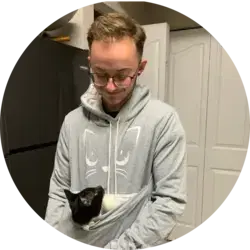Accidents happen—and when they involve your pet, every second counts. Having a basic understanding of pet first aid tips can help you stay calm, take control, and potentially even save your pet’s life before you reach the vet.
This guide walks you through how to handle common pet emergencies like choking, bleeding, heatstroke, and more. You’ll also find a list of must-have items to include in your pet first aid kit, so you’re never caught off guard.
Choking: What to Do If Your Pet Can’t Breathe
Cats typically choke on string-like objects such as thread, ribbon, or cords, while dogs may choke on toys, bones, rawhide, socks, or other small objects.
Warning: If you see a string hanging from your cat’s mouth, do not pull it unless it slides out easily. Pulling could worsen internal injuries.
Signs of choking:
Pawing at the mouth
Gagging or drooling
Coughing
Inability to breathe
What to do:
Check the mouth: Try gently opening their mouth and sweeping with a finger to remove any visible blockage.
Blow into their nose: If their chest doesn’t rise, the airway may still be blocked.
Shake or invert: Hold small pets upside down or lift larger pets in a wheelbarrow position to encourage dislodging by gravity.
Use the Heimlich maneuver
Make a fist and place it under the ribcage.
Use your other hand to apply quick, upward thrusts toward the chest.
Bowel Obstructions: When Curiosity Becomes Dangerous
Dogs, especially puppies, love to chew on anything. If they swallow something that blocks the gastrointestinal tract, it becomes a serious emergency.
Signs of a bowel obstruction:
Vomiting (often repeatedly)
Lethargy or whining
Hunched posture
Bloating or dehydration
Do not allow your pet to eat or drink until they have been evaluated by a vet—surgery may be required.
Fractures: Supporting a Broken Limb
Pets can break bones during rough play, car accidents, or falls.
Signs of a fracture:
Limping or refusal to put weight on a limb
Swelling
Visible deformity
First aid for fractures:
Muzzle your pet to avoid pain-related biting
Gently place them on a flat surface
Use a firm board, towel, or blanket as a stretcher
Do not apply a splint yourself—it can cause further harm
External Bleeding: Control Before It Escalates
General tips:
Apply direct pressure with a clean towel or gauze
If blood soaks through, don’t remove the dressing—add more layers on top
Elevate the injured area above the heart if possible
Bleeding paws: Use flour or a styptic pencil to stop minor nail bleeding. Wrap and keep pressure on the area.
Legs or torso: Use towels and tape to apply pressure and stabilize. Look for signs of internal bleeding (like labored breathing).
Ears: Fold gauze over the ear and tape it in place over the head and under the neck. Ensure your pet can breathe comfortably.
Heatstroke: Cooling Down Quickly
Never leave pets in hot cars or direct sunlight. Heatstroke can happen fast, even on mild days.
First aid for heatstroke:
Move your pet to a shaded area
Wet a towel and wrap it around their neck and body
Keep re-wetting with cool water, not ice cold
Run water over the belly and inner thighs
Get them to a vet as soon as possible
Bites and Punctures: Hidden Injuries Can Be Serious
After a fight, long-haired pets may have wounds hidden beneath their coat. Look for swelling, damp fur, or signs of pain.
Clean minor bites with clean water
Do not remove deeply embedded objects
Monitor breathing—labored or noisy breathing requires immediate vet care
What to Include in a Pet First Aid Kit
Every pet parent should keep a well-stocked pet first aid kit at home and when traveling. Here’s what to include:
Gauze rolls and pads
Adhesive tape or self-cling wrap
Tweezers and blunt-end scissors
Digital thermometer (for pets)
Antiseptic wipes or saline solution
Muzzle
Hydrogen peroxide (only if advised by a vet)
Disposable gloves
Styptic powder or pencil
Blanket or towel for transport
Pet-safe antiseptic spray
Emergency contact list (vet, poison control, etc.)
When to Use First Aid vs. When to Go to the Vet
Pet first aid is about stabilizing, not replacing professional care. Use these tips to manage the situation until you can get help.
Call your vet or an emergency clinic immediately if your pet:
Is unconscious
Has difficulty breathing
Has severe bleeding that won’t stop
Shows signs of poisoning
Can’t walk or stand
Key Takeaway
Knowing even the basics of pet first aid tips can make a huge difference in an emergency. From managing minor injuries to responding to life-threatening conditions, being prepared gives you the power to act quickly and confidently. Equip yourself with a solid first aid kit, stay calm under pressure, and remember—your fast action can help your pet get the care they need, when they need it most.

As Spot’s resident cat enthusiast, I am dedicated to researching and sharing information that helps pet owners take the best care of their pets. Pet ownership comes with it’s share of challenges, but my goal is to help make this journey easier.












